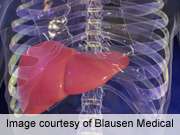Hepatitis: The hidden hazard

(HealthDay)—Of all the diseases people worry about getting, viral hepatitis is usually way down on the list. Most often it's thought of as a disease that affects only drug addicts or the sexually promiscuous. Though those groups are at higher risk, almost anyone can contract hepatitis.
"The vast majority of people who have viral hepatitis, especially hepatitis C, don't know they have it, and that's the biggest problem we have with hepatitis," said Dr. David Bernstein, chief of hepatology at North Shore University Hospital in Manhasset, N.Y.
A bipartisan bill was introduced in Congress last year, the Viral Hepatitis Testing Act of 2011, that would establish a national system to identify the incidence of hepatitis B and C infections, and provide funding to increase the availability of testing.
According to the Centers for Disease Control and Prevention (CDC), more than 2 million U.S. baby boomers are infected with hepatitis C and many more may have the disease but not know it because it often doesn't cause symptoms until it has caused severe liver damage. The CDC recommends that all people born between 1945 and 1965—the baby boom generation—get a blood test test for the disease, and estimates that this would identify about 800,000 additional people as having hepatitis C, which could save more than 120,000 lives.
Last month, the U.S. Preventive Services Task Force released new guidelines, updated from 2004, that take a somewhat softer stance than those of the CDC. Instead of recommending screening for all baby boomers, the task force suggests that clinicians "consider" screening for this age group.
Hepatitis C is one of the three most common forms of viral hepatitis, the other two being hepatitis A and B. Hepatitis is an inflammation of the liver, and when that inflammation is caused by a viral infection, the disease is known as viral hepatitis.
Hepatitis A is primarily an acute infection that gets better on its own. The severity of hepatitis A can range from a mild illness that lasts a few weeks to a severe condition that lingers for months. Hepatitis A generally does not become chronic like hepatitis B and C do. "In about 99 percent of people, hepatitis A causes no long-term concerns [and is] very rarely serious," said Dr. Bruce Bacon, a professor of internal medicine in the division of gastroenterology and hepatology at the St. Louis University School of Medicine in Missouri.
Hepatitis A is spread through fecal contamination, often in food or drinks, according to the CDC. Its symptoms, which are similar to those of other foodborne illnesses, include fever, nausea, vomiting and abdominal pain. Hepatitis A does not require any specific treatment, and there's a vaccine available to prevent it.
Hepatitis B, on the other hand, is a more serious form of viral hepatitis. It often causes no symptoms, leaving people unaware that they've been infected. The disease can pass from mother to infant during birth or by having sex with an infected partner, sharing drug needles or even sharing such items as a razor or toothbrush with an infected person, according to the CDC. There's no cure for hepatitis B, although a vaccine can prevent the disease.
"For hepatitis B, most of the time transmission is from mother to child at childbirth," Bacon said. "But in the U.S., if hepatitis B is identified in the mother, the baby can be vaccinated at the time of childbirth and given [an additional medication] that can usually break the transmission cycle."
Hepatitis C is spread through the blood, according to Bernstein. That's why people who've shared straws to snort cocaine or needles to inject drugs face a higher risk for infections. Also at greater risk are people who had blood transfusions before 1992, when the blood supply started being screened routinely for hepatitis C.
Those are the people who should be screened, according to the task force guidelines. These high-risk individuals have about a 50 percent chance of being infected with hepatitis C, whereas people born between 1946 and 1964 have a 3 percent to 4 percent chance of being infected, said task force member Dr. Kirsten Bibbins-Domingo, an associate professor of medicine and of epidemiology and biostatistics at the University of California, San Francisco.
You can't alter the past, but you can improve your future, Bacon said. "There's nothing much you can do about what happened 20 or 30 years ago if you had a youthful indiscretion or were given a blood transfusion, but you can get tested," Bacon said. "We have treatments that can cure hepatitis C, so there's good reason to find out whether or not you've got it."
Bernstein said that cure rates for hepatitis C are now 75 percent and higher, depending on the specific type of hepatitis C infection that a person has.
More information: The U.S. Centers for Disease Control and Prevention offers a quick assessment of viral hepatitis risk.
To learn more about one man's struggle with hepatitis C, click here.
Copyright © 2012 HealthDay. All rights reserved.


















